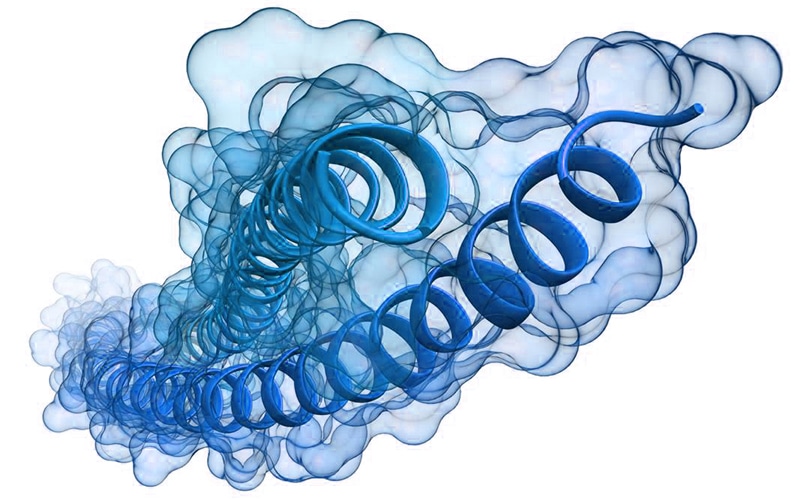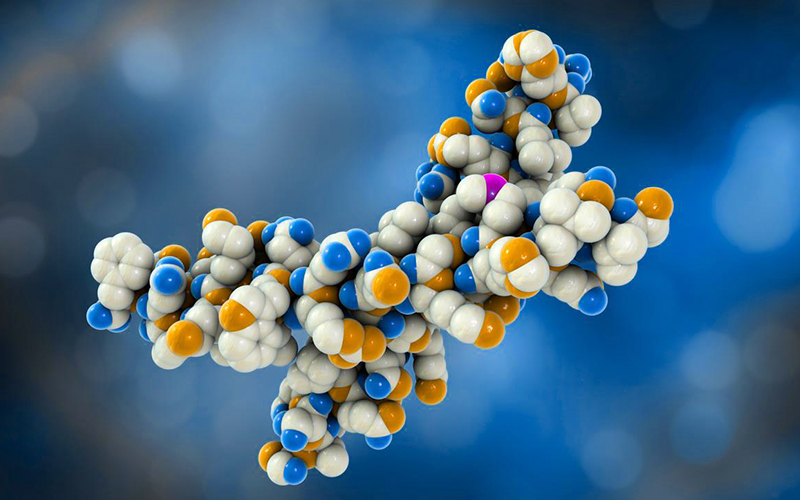Cell-Free Protein Expression
QYAOBIO provides different cell-free protein expression for customers in worldwide
Cell-free protein expression is the in vitro synthesis of proteins, it applies translation-compatible extracts of whole cells. Because this protein synthesis occurs in cell lysates rather than within cultured cells, this method is called cell-free.
Cell-free protein expression is also known as in vitro translation, cell-free translation, cell-free protein synthesis. This technique enables researchers to express and manufacture functional proteins rapidly in small amounts. Comparing to in vivo techniques in bacterial or tissue culture cells, cell-free protein expression is fast since no requirement of gene tranfection, cell culture or extensive protein purification.
Cell-free System Applications

Cell-free proteins expression is useful and flexible for various research applications:
- Characterize protein-protein interaction experiments
- Protein-nucleic acid interaction experiments
- Functional analysis of mutant or truncated proteins with rapid and high-throughput expression
- Mammalian protein expression with proper glycosylation and native PTMs
- Structural analysis of proteins labeling with stable isotopes
- Analysis or production of functional virons or toxic polypeptides
- Analysis of component for protein folding, protein stability, protein degradation
- Diagram of cell-free protein expression combined with protein mass specrometry(MS)
Advantages of Cell-free Expression
Cell-free expression systems are prepared by incubation of purified and enzymes and co-enzymes. These systems are a novel cost-efficient bio-manufacturing technology, with several advantages:
- Easily control and access
- High production yield without by-product formation and cell mass synthesis
- Implementation of biological reactions, which is unavailable in living microbes or chemical catalysts
- Faster reaction rate with enzymatic systems, without the barrier of cellular membrane
- Strong toleratance to toxic compounds
- Broad reaction conditions, like high temperature, low PH, organic solvents or ionic liquids
Basic of Cell-free Expression
There are two basic components in cell-free protein expression: genetic template (mRNA or DNA), reaction solution.
- The genetic template encoding the target protein
- The reaction solution contains the necessary transcriptional and translational molecular machinery
The common cell extracts of cell-free expression contain most or all of the molecules in the reaction solution, including:
- RNA polymerases for mRNA transcription
- ribosomes for polypeptide translation
- tRNA and amino acids
- enzymatic cofactors and an energy source
- cellular components essential for proper protein folding
Normally, cell lysates provide the suitable composition and proportion of enzymes and building blocks for translation, the energy source and amino acids must be added to sustain protein synthesis. The cell membranes are removed to leave the only cytosolic and organelle components, hence in term of cell-free extracts.
The first type of lysates in cell-free protein expression is derived from prokaryotic organisms. Recently, system extracts basic of insect cells, mammalian cells and human cells are developed and commercially available.
Types of Cell-free Extracts
Extracts for cell-free expression are made from different systems to support high level protein synthesis.

Prokaryotic Extracts
The first cell-free extracts with translation support are made from E. coli. Advanced development of eukaryotic in vitro translational systems:
- Rabbit reticulocyte lysates (RRL)
- Wheat germ extracts
- Insects cell lysates (SF9 or SF21)
Extracts from these eukaryotic systems contain all necessary cellular macro-molecules for efficient protein sysnthesis, like: ribosomes, translation factors, tRNAs. In addition, energy source and amino acids must be supplemented.
Cell lysates from E.coli and wheat germ are devoid of endogenous genetic message. However, lysates from rabbit reticulocytes and insect cells contain endogenous mRNAs, which can be translated in the synthesis reaction.
The following table compares different cell-free expression systems, highlight advantages and disadvantages of existing extract-based systems for recombinant protein synthesis. Selection of cell-free systems should consider the protein biological nature, application, expression template.
| System | Advantages | Disadvantages |
| E.coli | Very high protein yield Relatively tolerant of additives | Eukaryotic protein insoluble in expressionImpossibility in eukaryotic co-PTMs and post-PTMs Difference from eukaryotes in codon usage |
| Rabbit | Mammalian system Cap independent translation | Sensitive to additivesImpossible of protein glycosylation Co-expression of off-target proteins |
| Wheat Germ | Possibility in large proteins translationHigh protein yield Devoid of off-target endogenous mammalian proteins | Impossibility in mammalian co-PTMs and post-PTMs Premature termination of products |
| Insect | Possibility in large proteins translation No endogenous mammalian proteins Possible of protein glycosylation in certain forms | Non-mammalian |
| Human | Possibility of co-PTMs and post-PTMs Functional protein synthesis Possibility in production of virus-like particles (VLPs) | New systemSensitive to additives Lower yield than E.coli |
PTM & Human Proteins
Although cell-free systems with extracts of E.coli, RRL and wheat germ, have some benefits over traditional in vivo (cell lines) protein expression. These systems still have limitation in human protein production with PTMs. Cell-free systems form E.coli and wheat germ are not capable of glycosylation, while rabbit reticulocyte systems require canine microsomal memebranes to produce glycosylated proteins, but decrease the overall protein yield. Insect cell-free systems have higher glycossylated protein yields than RRL systems, but the glycosylation patterns are different from those from human cells.
Different Cell-free Systems
Normally, the whole cell extracts contain all macro-molecules and components for transcription, translation, and post-translational modification. The components include RNA polymerase, transcription factors, ribosomes, tRNA, regulatory protein factors. Once supplemented with co-factors, nucleotides, specific gene template. These extracts can synthesize required proteins in a few hours.
Although cell-free (in vitro translation IVT) protein expression systems are not sustainable for large scale production, these systems still have several advantages over traditional in vivo systems.
- Cell-free expression can synthesize recombinant proteins rapidly without the hassle of cell culture.
- Cell-free systems can label proteins with modified amino acids, this provides rapid proteolytic degradation by intracellular proteases.
- It is simpler to express different proteins simultaneously in cell-free method.
Comparison of Cell-free Systems
| E.coli | Rabbit reticulocyte | HeLa | CHO | |
| Yield | High | Low | Medium-High | High |
| Protein Modifications | None | Limited Glycosylation | Glycosylation &Phosphorylation | Glycosylation &Phosphorylation |
| High MW Proteins | Not Recommended | Not Recommended | Recommended | Yes |
| Functional Proteins | Possible | Possible | Yes | Yes |
| Comments | Robust System | Flexible System | Higher yield per reaction | Most economical |
Call Us
+86(021)-50795728
+86(027)-60707970
